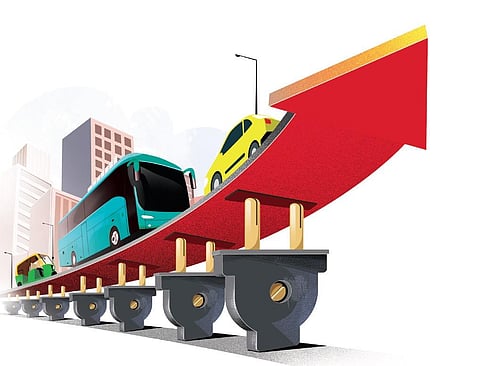Gamechanger: Sodium ion batteries may make EVs far more affordable, says report
Sodium-ion batteries are slowly finding their way into the Electric Vehicle (EV) market as lithium-ion batteries have turned out to be too costly for lower-priced EVs due to the difficulty in mining the metal.
With an energy density profile similar to that of lithium iron phosphate or LFP batteries, several companies have started looking at this emerging technology as a cost effective and eco-friendly way of meeting the electrification needs of India.
This could add to the momentum that the Indian auto market has already seen in terms of electrification. India seeing a proliferation of EV models launched by both major automakers as well as start-ups and new entrants.
However, while government subsidies have helped make EVs successful in the scooter segment, in other segments, the high cost of batteries — which account for around 40% of the cost of an electric car — have proven to be a drag in other segments.
Limitations of lithium batteries
Currently, automakers prefer lithium EV batteries due to their high energy density — basically, more stored-up power per kilogram. However, its adverse effect on the environment has always been a limitation.
Other than these two factors, lithium batteries can also be somewhat volatile.
There are two chemistries in lithium-ion batteries - Nickel Manganese Cobalt (NMC) and Lithium Iron Phosphate (LFP) - based on the other materials used in the battery.
“NMC has higher energy density but is more volatile and hence, unsafe. A needle test is used to check battery safety. In this test, a long needle is inserted into the battery, shorting it. This simulates an electric vehicle or EV getting into an accident,” said the analysts from Incred Equities.
“When this test is performed on NMC batteries, they explode. When the same test is applied to LFP batteries, they discharge a noxious gas but don’t explode,” it added.
Also, although the impacts of extracting lithium are considerably lower than for oil and gas, mining lithium does have environmental costs.
Another limitation with the increased need for lithium-ion batteries is the fact that the demand is outstripping supply.
“In 2020, 37% of lithium demand was from EV batteries. It is estimated that by FY2030, 80% of lithium demand will be from EV batteries,” said the analysts.
“Global supply of mined lithium will be inadequate to service demand just from batteries alone. In the absence of mined lithium, lithium-ion batteries would witness an increase in prices. This would make low-end EVs unaffordable for customers and end up stifling the electrification of the transportation sector. Thus, adequate sodium-ion battery production is effectively a prerequisite for the EV boom to continue,” it added.
Battery of the future?
The solution to this shortage could be identifying cheap and abundant chemicals that could serve as replacements for lithium in rechargeable batteries.
Two possible elements that fit the bill are sodium and potassium. Yet significant challenges remain for these alternatives.
Moreover, sodium-ion batteries address the concerns of geopolitical and supply-chain issues that are associated with Lithium-ion batteries.
The materials, which will be used in such Sodium-ion batteries, can be fabricated in-house. Hence, the batteries would be a live example of ‘Make in India’ and ‘Make for India’.
On the downside, sodium-ion batteries can’t provide the type of range for electric vehicles offered by lithium-ion batteries, but they do present some unique advantages.
In a sodium-ion battery, lithium ions are replaced with sodium ions in the battery’s cathode, and lithium salts swapped for sodium salts in the electrolyte.
Sodium-ion batteries are finding their niche in smaller, low-range EVs and stationary applications such as home energy storage systems. With their lower energy density, sodium-ion batteries are better suited for vehicles that don’t require a long driving range, such as city cars or mini vehicles.
“Na-ion EVs [Sodium-ion] would be cheaper and have a shorter range than their LFP counterparts. This makes them more suitable for the lower end of the EV market, which would have more EVs for fleet applications,” noted the report.
Also, these batteries offer a major advantage in cold temperature storage, since they perform really well even at such low temperatures as -10°C or -20°C.
“Adequate sodium-ion battery production is effectively a prerequisite for the EV boom to continue,” noted the report.
Sodium-ion batteries promise to be a viable alternative to lithium-ion batteries in a big way. Despite having made significant progress, sodium-ion batteries are yet to be easily available commercially.
Despite a lot of excitement in the media about sodium-ion batteries as a game-changer, there are certain vital drawbacks that should be considered.
In sodium-ion batteries, the energy densities are in the range of 100 wh/kg to 160 wh/kg and match the Lithium Iron Phosphate (LFP) performance at present.
The technology, however, is less mature compared to lithium-based technologies, and is undergoing heavy development.
However, it promises to provide a cost-effective solution to the electrification needs of a massive market as such as India.

